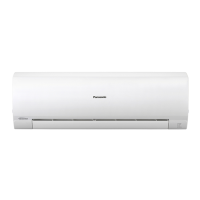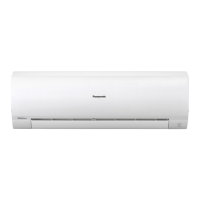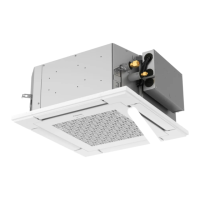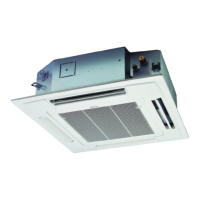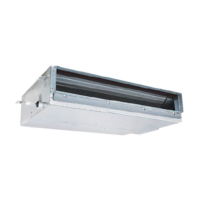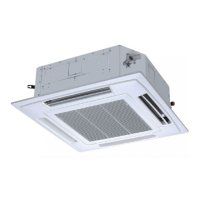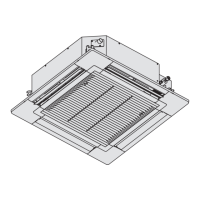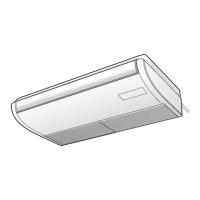25
(3) Using a sabre saw, keyhole saw or hole-cutting drill attachment, cut a hole of the values
shown in the table below in the wall. Hole should be made at a slight downward slant
(gradient 1/100 or more) to the outdoor side.
Wall
Indoor side
Cut a hole.
Outdoor side
Type 15, 22, 28, 36 45, 56, 73, 106
Hole Dia. (mm)
70 80
(4) Place a plastic cover over the end of the pipe (for indoor side only) and insert the pipe in the
wall.
This will protect the tube from contacting the metal lath or wire lath, leakage due to
condensation or entering small animals through the hole.
CAUTION
When the wall is hollow, please be sure to use the piping sleeve assembly to prevent dangers
caused by mice biting the connection cable.
Wall
Indoor Outdoor
15 mm
Approx. 5 - 7 mm
Bushing for tube assembly
ø80 mm through hole
Sleeve for tube assembly
Putty or caulking compound
3-3. Install the Installation Plate on the Wall
If Wooden Wall
(1) Attach the installation plate to the wall with the 5 screws (4 × 25) provided.
(2) Double check with a carpenter’s level or tape measure that the panel is level. This is
important to install the unit properly.
(3) Make sure the panel is flush against the wall. Any space between the wall and unit will
cause noise and vibration.
If Concrete Wall
(1) When attaching the installation plate to the concrete wall, use the screws (field supply) for
concrete or an optional anchor plug and fix to the hole of ø5 mm of the installation plate as
shown in the figure under Section 3-2.
When fixing with bolt, attach to the hole of ø8 mm.
(2) Double check with a carpenter’s level or tape measure that the plate is level. This is
important to install the unit properly.
(3) Make sure the installation plate is flush against the wall. Any space between the wall and
unit will cause noise and vibration.
01_330200_EU_Eng.indb 25 2021/1/13 10:22:59

